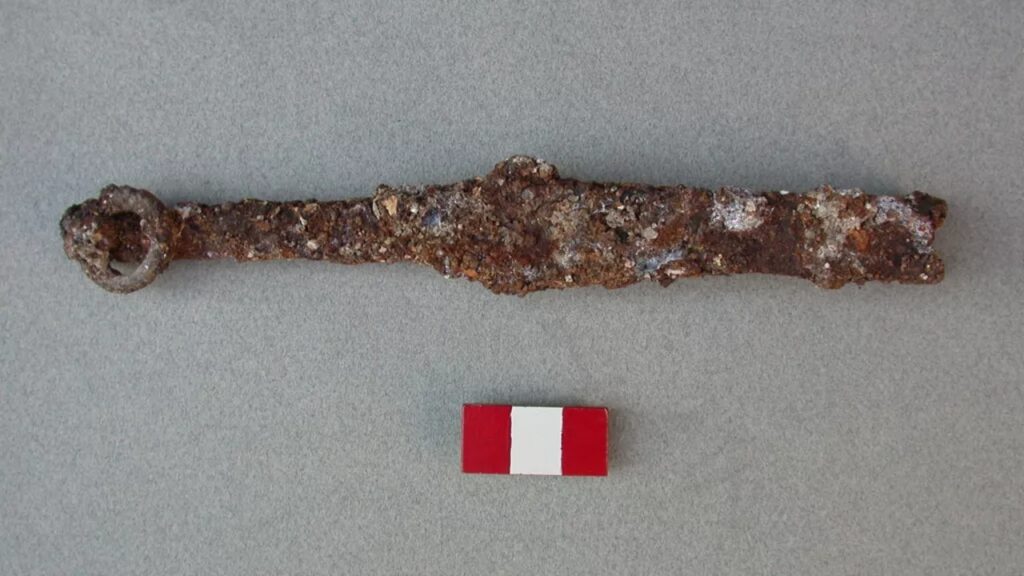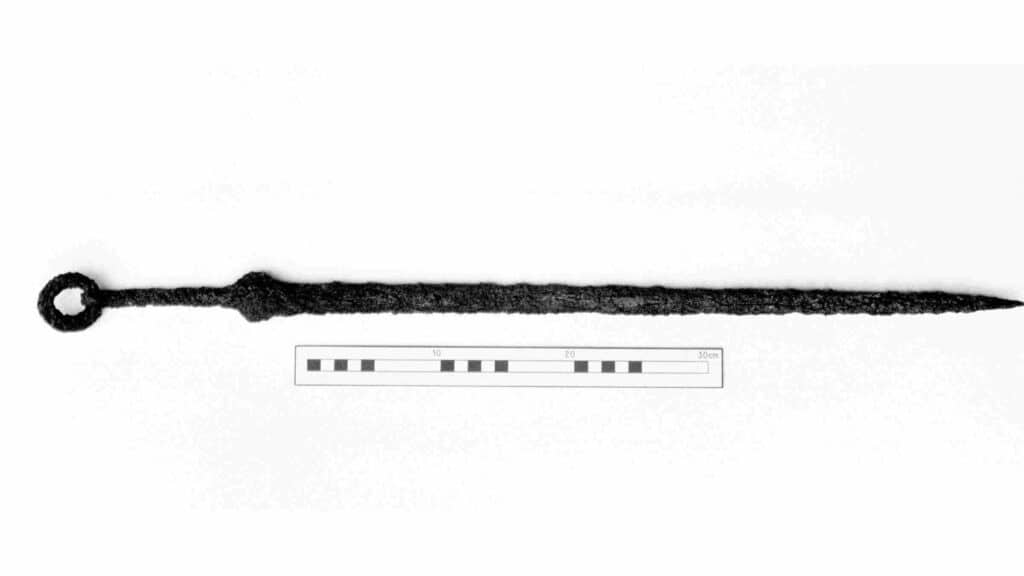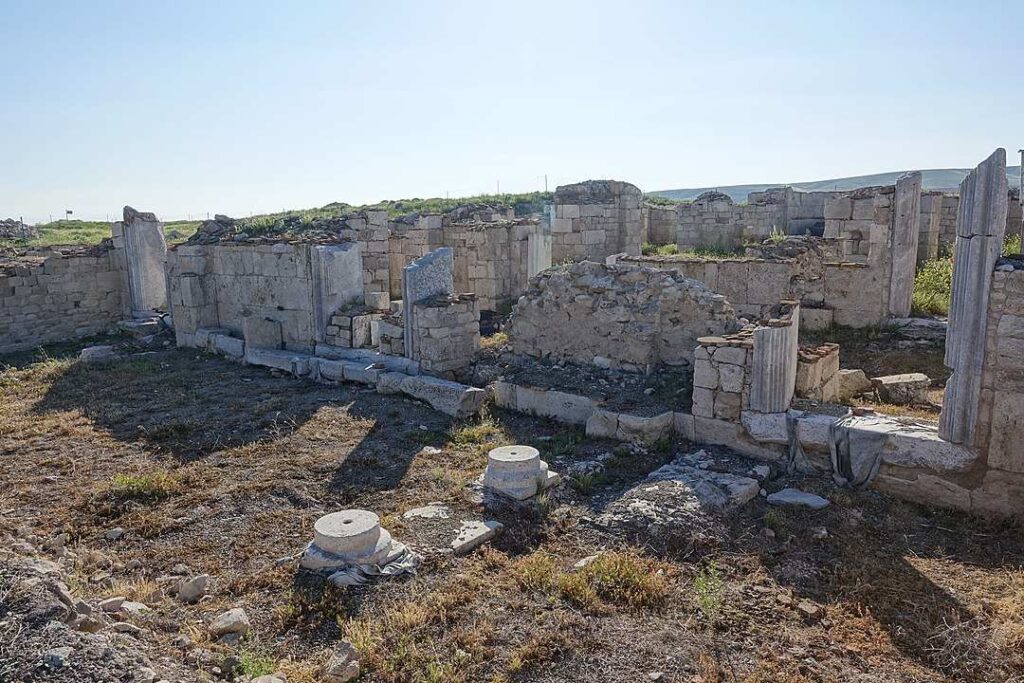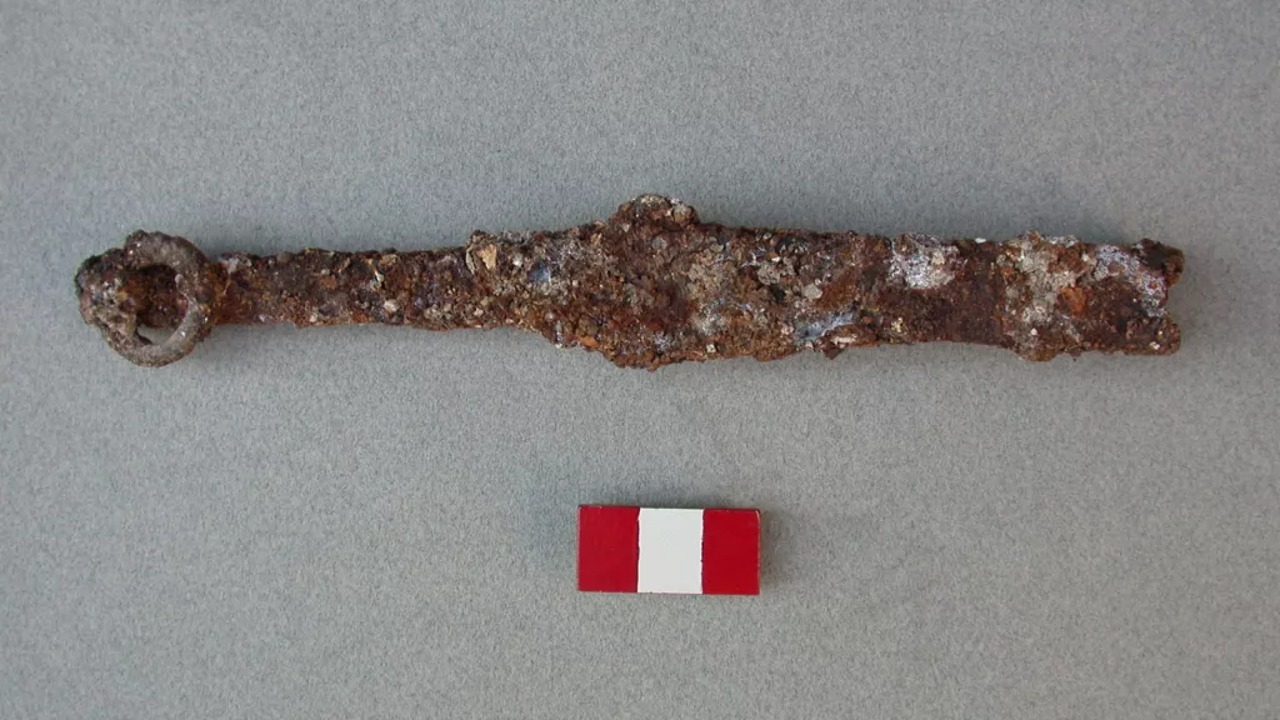
Archaeologists have studied weapons from the Byzantine period that they have not yet been able to attribute to any known type. During excavations in the city of Amoria in western Asia Minor, two unusual swords were lifted from the ground. One of them is reasonably well preserved and the other much worse, but you can still get an idea of its original form. The weapon was studied by specialists led by Errikos Maniotis from the Aristotle University of Thessaloniki, Greece. The results are presented in a paper published in the Journal of Art History.
Amorius is known from archaeological evidence since 133 BC: apparently then, after the conquest of Phrygia by the Romans, began to mint coins. The city was first mentioned in written sources during the reign of Octavian Augustus, but it began to play an important role in the region during Byzantine times. On the one hand, it is located at the crossroads of trade routes, on the other – from the middle of VII century Amoria was in the first line of defense against the Arabs.

In 838, after the siege, the Arabs took the city, executed many soldiers and residents for refusing to accept Islam, and set a fire. For some time no one lived on this site, but in the Middle Byzantine period a new city under the same name was erected on the ruins. To avoid repeating past mistakes, it was built as a good fortress, capable of withstanding a long siege.
Archaeologists find quite a few weapons of both Byzantine and Arab types
For obvious reasons, archaeologists find quite a few weapons of both Byzantine and Arab types in the excavations of Amoria. But two swords they distinguish from the general mass of finds. Both date from the 10th to 11th centuries (mid-Byzantine period). The first sword, heavily rusted, was found in the atrium (courtyard) of the church, the second in the lower part of the city, behind the fortress wall.
The true size of the first find is difficult to determine because of its poor condition, while the second sword has a hilt 14 centimeters long and a double-edged blade at least 61 centimeters long. Despite the different state of preservation, scholars have concluded that these swords are similar to each other and do not resemble any other weapon typical of Byzantium at that time.
Both specimens have a ring shaped tip on the end of the hilt. In Byzantium there were swords with a round tip (mostly made on spats), but the ring-shaped tip is unusual for these places – it is found on weapons in completely different regions. There are similar findings dating back to the time of the Chinese Han dynasty.
It is possible that Huns and Scythians adopted this hilt form from the Chinese. In the Sarmatian kurgans similar specimens are also found, but it is not clear from whom they adopted them. The Sarmatians themselves, most likely, brought such swords to the Romans, with whom they sometimes served as mercenaries.
But apart from the tip, which, as we have noted, is extremely atypical for Byzantium, the edged weapons are also separated by types of hards or their absence. On the examined samples – smooth, rounded hards, which are rare and usually found on ceremonial weapons. The reason for this is most often explained by the fact that such a guard does not protect the swordsman’s hand well, not detaining the enemy’s weapon. However, according to other weapons experts, rounded guard, on the contrary, is useful: it draws the enemy’s blade aside instead of detaining it, which is convenient for not very strong fighter (it is quite difficult to hold on the guard of his sword the weapon of a person who is significantly superior in physical strength).

The combination of the ring-shaped tip and the smooth wardre did not allow researchers to say with certainty which nation or group of mercenaries could have used such a weapon. They suggested identifying a new type: hybrid Byzantine swords with a ring-shaped tip. Given that they were found next to each other in Amoria, it is possible that “there was a specific weapons workshop in the city that produced this particular type of sword,” the study says.
However, this could be a coincidence. Moreover, we have noted above that in the Middle Byzantine period Amoria was a fortress of the first line of defense. It was fought there often and with a very difficult enemy. Such cities usually attract mercenaries, bringing with them unusual weapons.
It is a bit surprising that the first sword was found in a church, because at that time it was not customary to enter a temple with weapons. But it is possible to assume how the blade ended up there. We know similar examples from sources: sometimes the weapon of the deceased was taken to the church as a votive offering, in memory of its owner.





